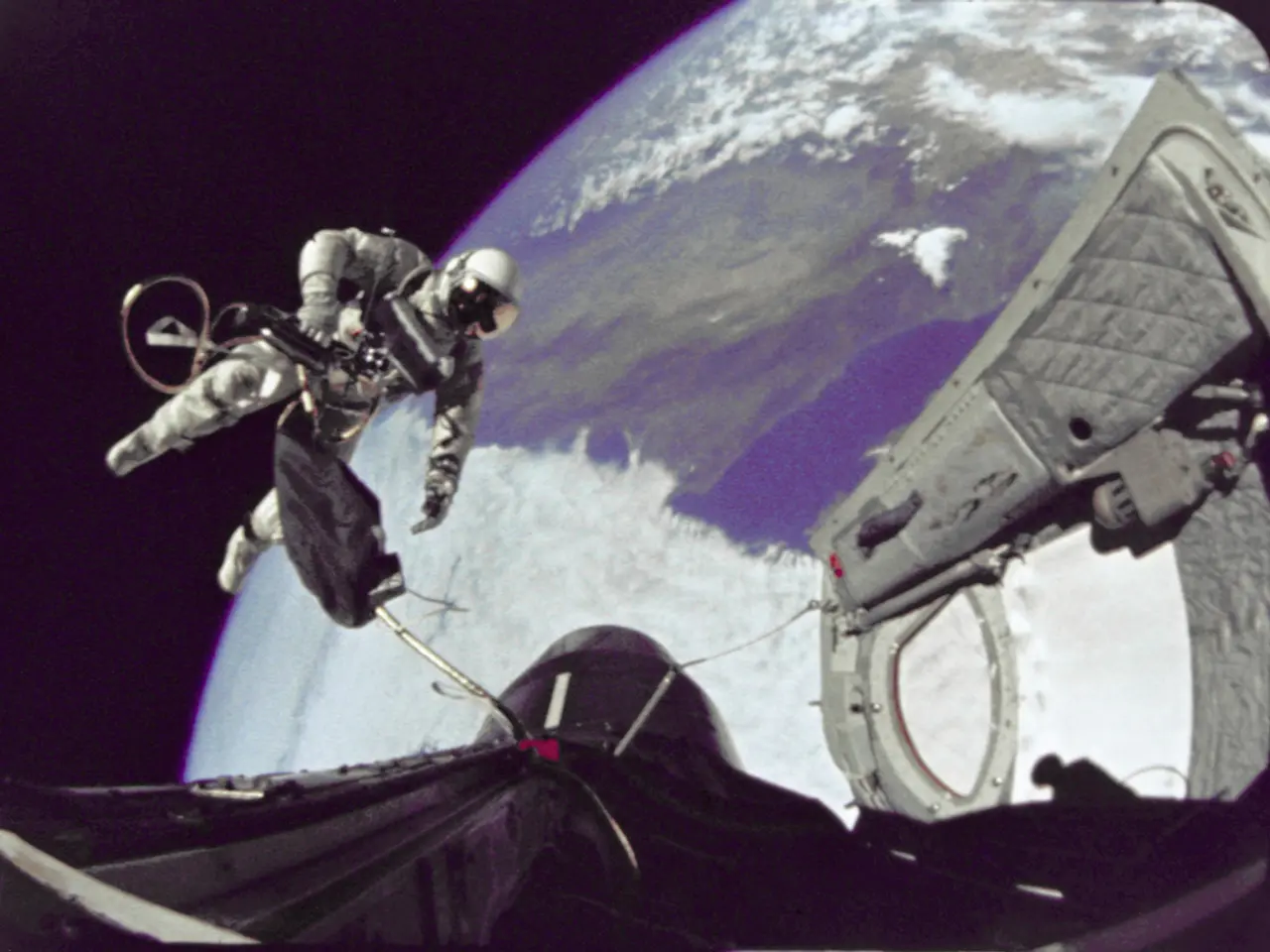Space Exploration Visions: Examining the Personal Worlds of ISS Astronauts (Orbital)
In a recent discussion, Dr. Cady Coleman, a seasoned astronaut and author, shared her experiences of spending almost six months on the International Space Station (ISS). The ISS offers a unique living and working environment, with its own set of challenges and rewards.
Time Perception on the ISS
Living on the ISS alters one's perception of time. The station's orbit around Earth takes approximately 90 minutes, resulting in around 16 sunrises and sunsets daily. This rapid orbital cycle can affect astronauts' circadian rhythms and requires them to rely on coordinated schedules and lighting inside the station to maintain normal sleep-wake cycles and performance.
Coping with Distance
Being so far from loved ones is a challenge for astronauts. They often use video calls, emails, and phone calls to communicate, which helps alleviate some emotional challenges. The sense of isolation is mitigated by strong crew camaraderie and frequent psychological support from mission control. While it is tough, astronauts like Dr. Cady Coleman emphasize the importance of routine communication and mental health support to stay connected emotionally.
Life in Space: The Mundane and the Marvelous
The mundanities of life in space reflect both the novelty and restrictions of the environment. Space is cramped, with limited room, no showers, and no laundry facilities. Astronauts must manage hygiene carefully, using rinseless wipes and no-rinse shampoo. Meals are pre-packaged, and eating requires adapting to microgravity by consuming foods that won’t float away or create crumbs. Daily chores include conducting scientific experiments, exercising on specialized equipment to counter muscle and bone loss due to weightlessness, and performing maintenance of station systems.
Despite these challenges, the ISS lifestyle is a blend of technical discipline, emotional adjustment, and adaptation to physical constraints, all framed by the thrill and challenge of living in orbit far from home. The lack of gravity makes even simple acts like moving around or drinking fluids a new experience.
For those interested in learning more about life aboard the ISS, subscribe to the Week In Science Newsletter for essential science news headlines. Dr. Cady Coleman, an astronaut and author, has written a book titled "Sharing Space: An Astronaut's Guide to Mission, Wonder, and Making Change". Samantha Harvey, the author of the novel "Orbital", explores the inner lives of astronauts aboard the ISS in her book, which won the Booker Prize late last year.
Host Flora Lichtman discussed the unexpected mundanities of living in space, the inspiration for writing Orbital during lockdown, and how astronauts make sense of their new reality when separated from humanity. For those seeking a deeper dive into the ISS lifestyle, Orbital offers a captivating exploration of the inner lives of astronauts aboard the ISS.
- Dr. Cady Coleman's book, "Sharing Space: An Astronaut's Guide to Mission, Wonder, and Making Change", offers insights into her experiences living on the International Space Station (ISS) and provides a deeper understanding of life in this unique space-and-astronomy environment.
- Space-and-astronomy enthusiasts might find the novel "Orbital" by Samantha Harvey intriguing, as it delves into the emotional lives of astronauts aboard the ISS, providing a blend of entertainment and scientific knowledge about life in space.







